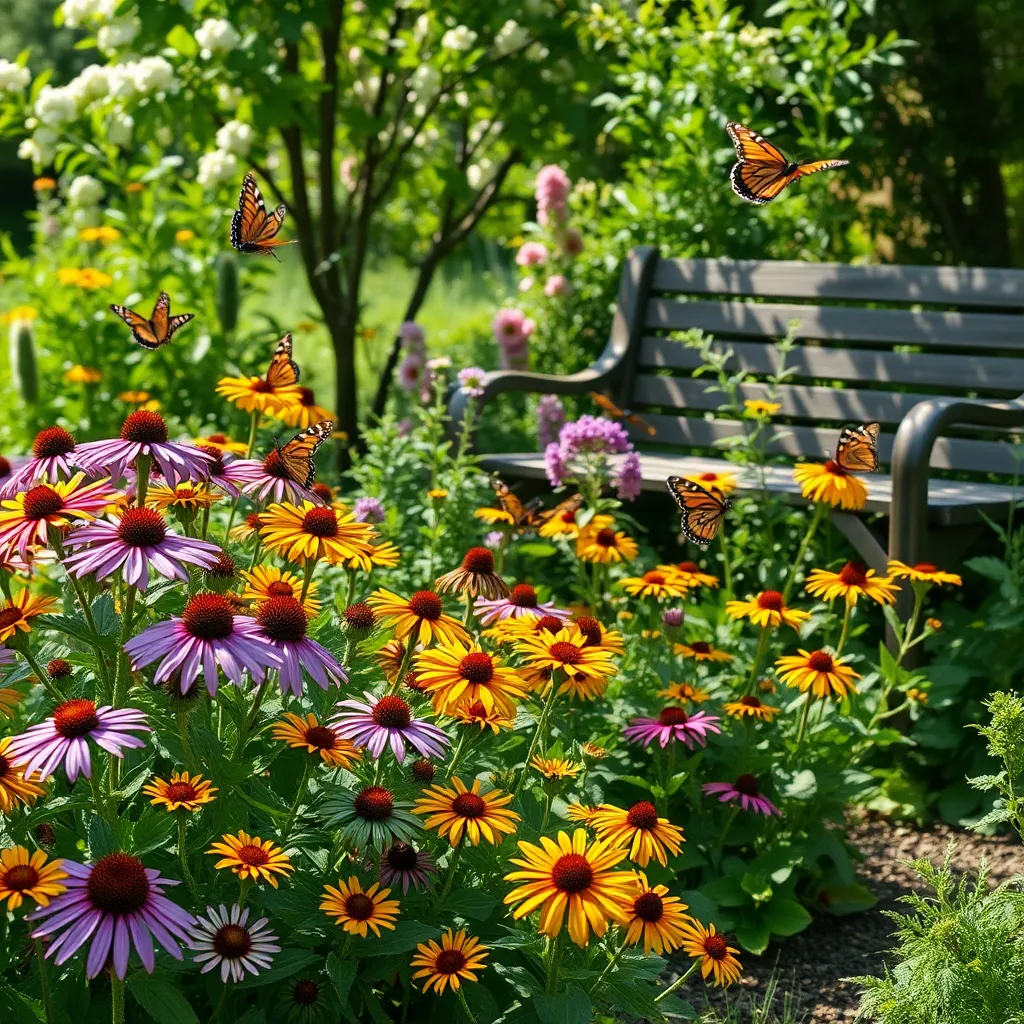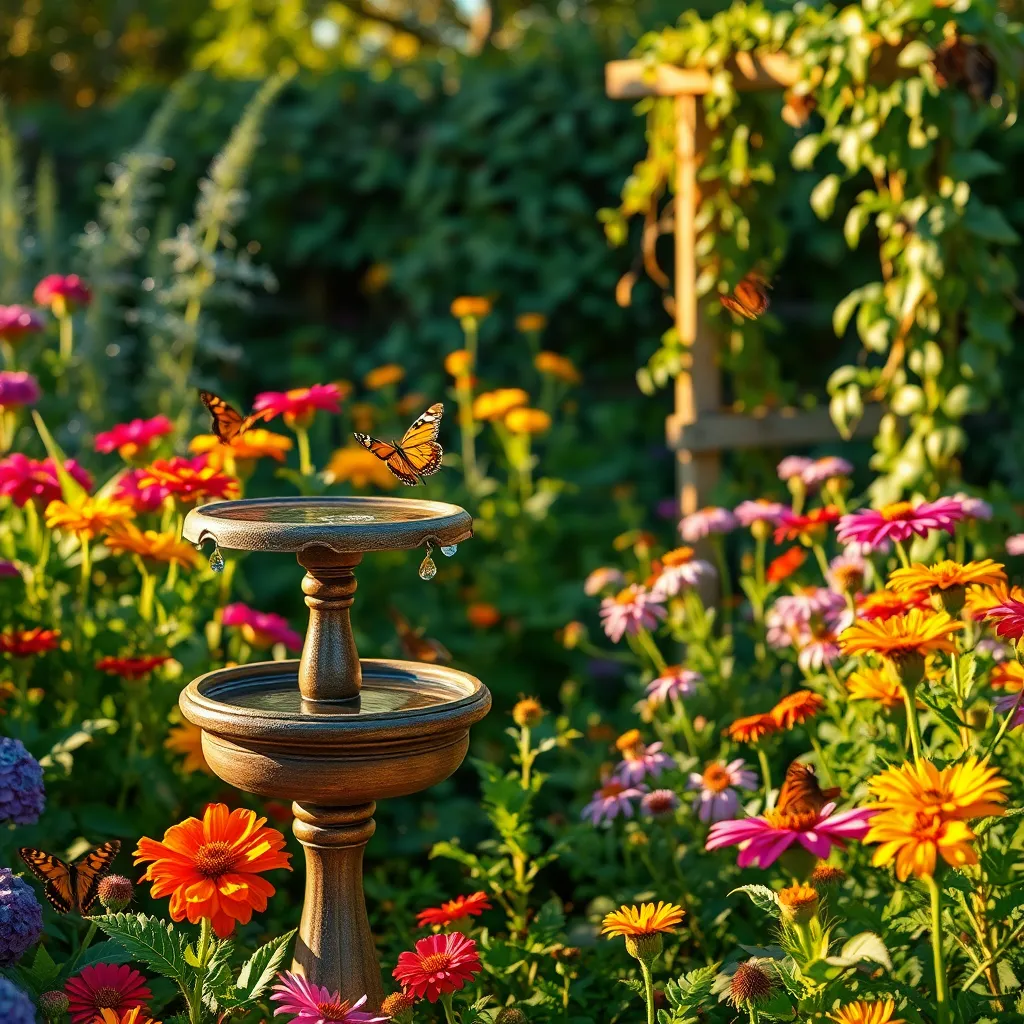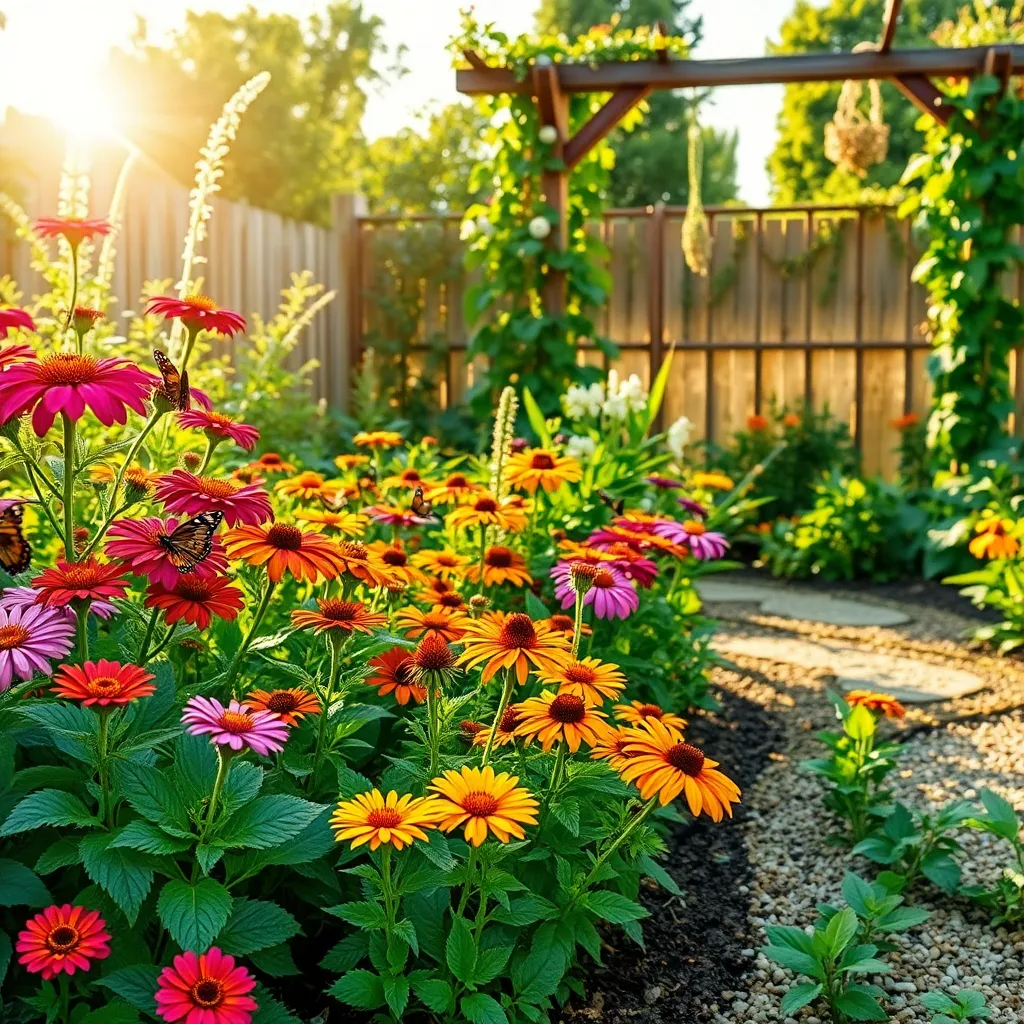Imagine stepping into your garden and witnessing a kaleidoscope of butterflies fluttering joyfully among vibrant blooms. Designing a butterfly garden invites not only these delicate creatures into your outdoor space but also a sense of tranquility and natural wonder that connects us all to the environment.
For both novice and seasoned gardeners, the process of creating a butterfly haven is a delightful journey, rich with opportunities to learn and grow. By understanding the specific needs of butterflies—ranging from the right host plants for caterpillars to nectar-rich flowers for adults—you’ll cultivate a thriving ecosystem that supports these essential pollinators.
In this article, we will guide you through selecting the perfect plants, designing a layout that maximizes butterfly attraction, and maintaining your garden with ease. Embrace the joy of watching your garden transform into a lively sanctuary, where butterflies dance and your gardening skills blossom in harmony with nature.
Select Butterfly-Friendly Plants

To attract butterflies, consider planting a variety of nectar-rich flowers like milkweed, coneflower, and lantana. These plants not only provide essential food sources but also create a vibrant array of colors that appeal to both butterflies and gardeners.
Choose plants with staggered blooming periods to ensure a continuous supply of nectar from spring through fall. Early bloomers like purple coneflower start the season off, while asters and goldenrods sustain the butterflies as the season ends.
Consider the growing conditions and specific needs of each plant to ensure a thriving butterfly habitat. For example, milkweed prefers well-drained soil and full sun, while coneflowers are drought-tolerant and can thrive in less fertile soil areas.
Advanced gardeners can enhance their butterfly gardens by incorporating host plants that cater to caterpillars. Planting parsley and fennel will specifically attract swallowtail butterflies, as these are their preferred host plants for laying eggs.
Plan Garden Layout Strategically

Creating a strategic garden layout is essential to attract and support butterflies effectively. Begin by planning your garden in a sunny location, as butterflies are cold-blooded and rely on the sun’s warmth to become active.
Consider incorporating a mix of nectar-rich flowers and host plants for caterpillars. This dual approach not only attracts adult butterflies but also supports their entire lifecycle, offering a more sustainable environment.
To enhance your garden’s appeal, arrange plants in clusters rather than single rows. Clusters of the same species make it easier for butterflies to spot flowers, and they provide a richer source of nectar in one place.
Ensure that your soil is well-draining and enriched with organic matter to support healthy plant growth. Regular watering, particularly during dry spells, will keep the plants lush and attractive to butterflies.
For advanced gardeners, consider adding a small water feature like a shallow dish with rocks. This provides both a water source and a place for butterflies to rest while drinking.
Incorporate Water and Shelter

Creating a butterfly-friendly garden involves more than just choosing the right plants; incorporating water and shelter is equally crucial. Butterflies need water sources for hydration and to extract essential minerals, so consider adding shallow dishes or birdbaths with stones for perching.
Think about creating small puddling areas where butterflies can gather. Simply fill a shallow dish with sand and water, allowing it to dry out slightly between waterings to mimic natural environments.
Adding shelter provides protection from predators and harsh weather. Include a variety of dense shrubs and tall grasses to offer safe resting spots for butterflies as they traverse your garden.
For those looking to go a step further, consider installing butterfly houses. These structures offer a safe haven during inclement weather and can be easily placed among your plants.
Remember to position water sources and shelters in sunny areas, as butterflies are cold-blooded and require warmth to stay active. Strategically placing these elements throughout your garden will create a welcoming habitat that encourages butterflies to linger longer.
Ensure Sunlight and Drainage

Butterflies thrive in gardens that receive ample sunlight, so it’s crucial to choose a spot that gets at least six hours of direct sunlight each day. This light is vital for both the health of your plants and the warmth butterflies need to become active and feed.
When designing your butterfly garden, consider using a raised bed or adding organic matter to improve drainage. Good drainage is essential as it prevents waterlogged soil, which can lead to root rot and deter butterflies from visiting soggy areas.
For beginners, planting a mix of native flowering plants can ensure your garden meets the sunlight and drainage needs. Native plants are adapted to your local conditions, which makes them more resilient and easier to care for.
Experienced gardeners might consider creating a slight slope or mounded areas to enhance drainage. This technique not only helps with water management but also adds visual interest to your garden layout.
Maintain with Eco-Friendly Practices

Using eco-friendly practices in your butterfly garden is both rewarding and sustainable. One of the simplest methods is to employ natural compost, which enriches the soil and reduces waste.
Creating your own compost from kitchen scraps and garden waste can significantly improve soil health. Not only does this reduce landfill waste, but it also provides your plants with essential nutrients to thrive.
In addition, consider using rainwater to water your plants. Installing a rain barrel can help you collect water naturally, which is both cost-effective and beneficial for your plants, as rainwater is generally free of hard minerals and chemicals.
To maintain healthy plant growth, integrate companion planting techniques. Pairing plants like marigolds with your butterfly-attracting flowers can naturally deter pests, reducing the need for chemical pesticides.
Using mulch is another effective way to conserve moisture and suppress weeds in your garden. Organic mulches, such as shredded leaves or bark, not only provide a habitat for beneficial insects but also improve soil structure as they decompose.
Finally, regularly monitor your garden for pests and diseases. Instead of reaching for chemical solutions, employ natural pest control methods like introducing ladybugs or using neem oil to keep your plants healthy.
Conclusion: Growing Success with These Plants
Creating a butterfly garden is not just about nurturing nature; it’s a beautiful metaphor for cultivating thriving relationships. Throughout this article, we explored five key concepts: understanding the needs of your partner just as you would the specific plants butterflies love, creating a welcoming environment, navigating challenges together, appreciating the journey’s transformation, and celebrating every small success. These principles mirror the patience and care required to build lasting connections.
As an actionable next step, consider setting aside time this week to have a heartfelt conversation with your partner about one of these principles, focusing on how you can both nurture your relationship like a blossoming garden.
Remember, every small effort you make today contributes to the vibrant relationship you’re cultivating for tomorrow. So, take a moment to save or bookmark this article, ensuring these insights are just a click away whenever you need a refresher or inspiration.
Looking ahead, know that with dedication and care, your relationships can flourish beautifully, just like a well-tended butterfly garden. Your journey to relationship success is just beginning, and with each step, you’re creating a more harmonious, loving connection.
